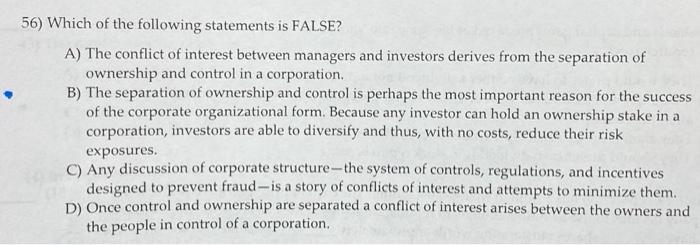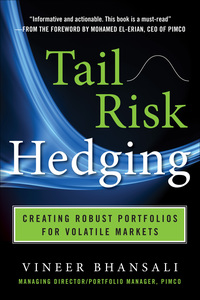53) The problem with the residual dividend policy is A) management is reluctant to cut the dividend even if there are low profits in a year. B) investors might come to expect a specified amount. C) the dollar amount of the dividend fluctuates from year to year. D) all of the above are possible problems. 56) Which of the following statements is FALSE? A) The conflict of interest between managers and investors derives from the separation of ownership and control in a corporation. B) The separation of ownership and control is perhaps the most important reason for the success of the corporate organizational form. Because any investor can hold an ownership stake in a corporation, investors are able to diversify and thus, with no costs, reduce their risk exposures. C) Any discussion of corporate structure - the system of controls, regulations, and incentives designed to prevent fraud-is a story of conflicts of interest and attempts to minimize them. D) Once control and ownership are separated a conflict of interest arises between the owners and the people in control of a corporation. 58) Which of the following statements is FALSE? A) Providing financing at below-market rates is an indirect way to lower prices for only certain customers. B) Trade credit is, in essence, a loan from the selling firm to its customer. C) The accounts receivable balance represents the amount that a firm owes its suppliers for goods that it has received but for which it has not yet paid. 60) The period of the is known as the conglomerate wave because firms typically acquired firms in unrelated businesses. A) 1960s B) 1970s C) 1980s D) 1990s 64) Which of the following is a firm's cash cycle? A) the average length of time between when a firm arranges funds to purchase its inventory and when it receives the cash back from selling its product B) the average length of time between when a firm pays cash to purchase its initial inventory and when it sells output from that product C) the average length of time between when a firm pays cash to purchase its initial inventory and when it receives cash from the sale of the output produced from that inventory D) the average length of time between when a firm arranges funds to purchase its inventory and when it sells the output produced from that inventory











